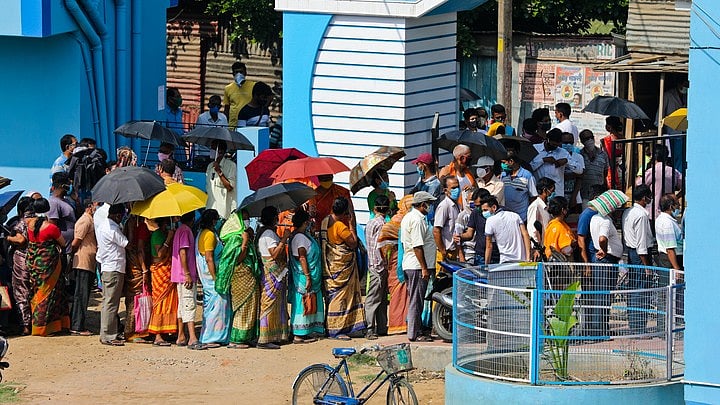
First-time employees in manufacturing — and their employers — will get help with social-security payments for as many as four years. Interns at the country’s top 500 companies will be given an allowance.
Credit: iStock Photo
By Andy Mukherjee
It took a loss of parliamentary majority for Narendra Modi’s government to start acknowledging the biggest source of social angst in the world’s fastest-growing major economy: raging youth unemployment.
Even in February, when it had presented an interim budget ahead of the national polls, the administration had paid little attention to the job crisis.
It was confident that a tripling of federal capital expenditure in four years would have a “huge multiplier impact” on employment. But with voters making known their displeasure with trickle-down economics, the new Modi government — now reliant on coalition partners for its survival — is changing tack.
Unlike in the previous two terms when Modi’s personality cult was employed to deflect attention from problems, Modi 3.0 is responding to political pressure. He’s even prepared to borrow a leaf from the opposition parties’ playbook to execute a policy U-turn.
Tuesday’s revised budget promised five new programs, totaling Rs 2,00,844 crore ($24 billion) in fiscal sops, to employers and new hires. These benefits, which aim to reach 41 million youth over five years, were first promised by Rahul Gandhi’s Congress Party, the main opposition grouping, in its election manifesto.
Moreover, the cost is almost the same as the so-called production-linked incentives that Modi had offered, starting in 2020, to a range of industries, from solar modules and electric-vehicle batteries to smartphones, drones and textiles.
That, too, was a five-year program. Its goal was to put India in the race to win investment from multinationals fleeing China.
The production subsidies have so far created 8,50,000 positions, directly and indirectly, according to finance-ministry statistics released before the budget. This is when, by the government’s own calculations, India needs 8 million new jobs every year.
While there is no official data on youth unemployment, CMIE, a Mumbai-based researcher, estimated that 45 per cent of jobseekers in the 15-to-24 age group were unsuccessful in their search in the financial year ended March 2023.
A more direct approach is needed. Which is why the focus is shifting to employment-based handouts from production-oriented subsidies. Among other things, the Modi administration will shoulder a part of the first month’s wage of anyone joining formal employment over the next couple of years.
First-time employees in manufacturing — and their employers — will get help with social-security payments for as many as four years. Interns at the country’s top 500 companies will be given an allowance.
On paper at least, these are welcome steps. The jobs crisis facing the youth is particularly acute in manufacturing, which added people at only a fifth of the 7.5 per cent pace at which factory output grew between 2000 and 2019.
The surplus agricultural labor went into construction and services, and then returned to the farm after Covid-19 disrupted the regular flow of migrant village workers to urban production centers. Factory employment remained stagnant.
This de-industrialisation is hurting India because manufacturing generally creates more productive jobs that pay better, helping lift the purchasing power of the masses. It’s little wonder than private consumption grew just 4 per cent last fiscal year — in an economy that expanded by 8.2 per cent.
It’s too early to say if the pro-labor tilt of Modi 3.0 is a genuine policy rethink or merely politically expedient — three crucial state elections are due later this year, and on pollsters’ current forecasts, Modi’s party is unlikely to do well in any of them.
However, not everything in the budget appears to have been dictated by short-term political calculations. Take the decision to curb trade protectionism by cutting tariffs on smartphones.
India had steadily raised import duties in recent years as part of a misguided yearning for self-reliance, when all that the tariffs did was to make it costlier to manufacture circuit boards, cameras, displays, batteries and enclosures in India.
As an assembler of components made elsewhere, India can’t capture much value from smartphones and other consumer electronics. But if it can take tariffs to the near-zero levels of China and Vietnam, it has a chance at joining global supply chains — and creating many more good jobs.